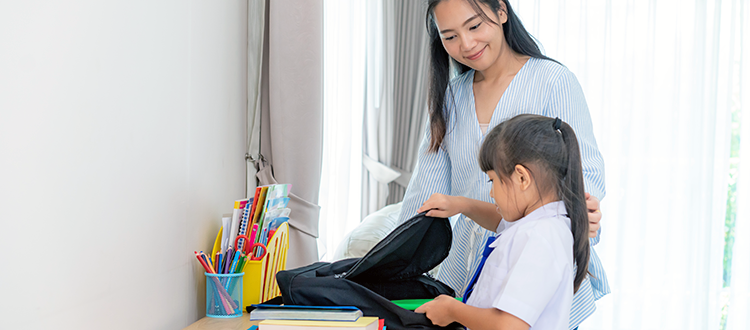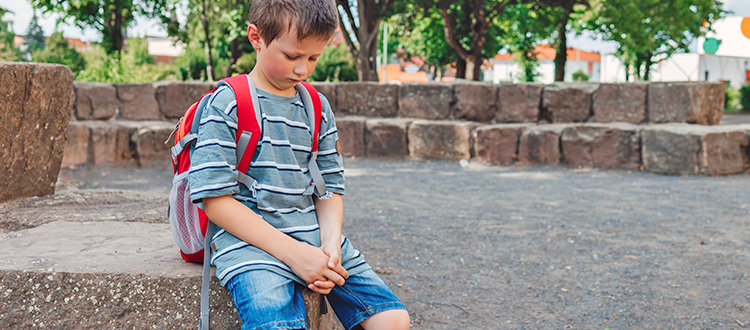Surviving Back-to-School Anxiety: 5 Daily Tips for Kids with Autism
Updated on May 19, 2025 Listen to the Podcast
Going back to school is an exciting time for kids, but it can also bring up a lot of anxiety. For autistic children, navigating the new environment and social dynamics can be especially overwhelming. So in this article, we’ll look at five daily tips—most of which are practiced at home—that can help your child with autism manage back-to-school anxiety successfully. With the right support, every child can thrive and embrace their unique journey of growth and learning. Combining these strategies together is particularly effective and goes a long way in helping us show up at our best as parents and caregivers.
1. Recognizing anxiety (it’s not always easy!)
Recognizing anxiety in children with autism can be a difficult task, but it is essential for providing the right support. Look for physical changes in behavior such as difficulty concentrating and sweaty palms, or changes in mood like irritability or low motivation. Sudden changes in eating habits and sleeping patterns can also provide clues. Even if you don’t notice any signs, proactive engagement is key. Ask questions and encourage your child to talk about their worries and fears without judgment so that they feel safe opening up to you. Try to remain positive when talking about school-related topics to reinforce the idea that school can be a fun learning experience despite any anxieties they may have.
2. Talking about feelings
One way to facilitate conversation is by setting aside some time each day for your child to talk about their feelings. This could be part of an evening routine or part of a morning routine before school. It’s helpful to ask open-ended questions such as “What are you feeling today?” or “How can I help?” Asking in this way encourages the child to express their feelings honestly and openly.
Another way to help autistic children express their feelings is by teaching positive self-talk skills. Reframing negative thoughts into more productive ones improves moods and reduces stress levels when anxious thoughts arise. For example, if a child is worried about failing a test, help them externalize their negative thoughts by giving them a name such as “Mr. Worry.” This helps create distance between the child and the negative thoughts, making them easier to address. You can then show kids how to replace negative thoughts with positive ones. If a child thinks, “I’m terrible at math,” help them reframe it to, “I may find math challenging, but with practice and effort, I can improve.”
3. Developing healthy routines
One of the most effective ways to ease back-to-school anxiety for children with autism is thorough preparation. A routine provides the structure and predictability they often crave. Begin by creating a visual schedule that outlines the school day’s activities, including arrival, class times, break periods, and dismissal. Visual aids such as pictures or icons can be especially helpful for children who struggle with verbal communication. By making a list of tasks that need to be completed each day, kids can feel more in control of their lives and the upcoming school year.

4. Creating a calming home environment
A calm and peaceful atmosphere reduces stress and provides a place of respite for kids who are feeling overwhelmed. Keep the noise level low to prevent overstimulation and try using sound machines, white noise apps, or even some light classical music. Introduce aromatherapy with essential oils such as lavender, vetiver, and chamomile to help induce feelings of tranquility, or citrus scents like orange, lemon, or bergamot to uplift moods. For unwinding after school, you can also encourage self-soothing activities such as deep breathing exercises, yoga, meditation, or journaling. Taking time out each day to practice these activities will show children how to manage their own anxieties in a healthy way. Lastly, remember the importance of limiting screen time, which can add unnecessary stress due to bright colors or flashing lights that cause sensory overloads. Limiting screen time before going to bed is particularly important, as adequate restful sleep is critical for managing anxiety levels overall.
5. Creating a ‘safe space’ at school
Having a designated safe space at school can be incredibly comforting for a child with autism. This space should be a quiet, calming area where the child can retreat to when feeling overwhelmed or anxious. Coordinate with the school to create a sensory-friendly space, equipped with tools such as noise-canceling headphones, stress balls, and fidget toys.
Did we miss any?
We hope these tips help you and your child prepare for the coming school year with reduced anxiety. If you have other tips for reducing back-to-school anxiety in autistic children, reach out to the AngelSense Support Team and let us know so that we can share them with our community!
Get peace of mind from AngelSense, the groundbreaking AI-based assistive technology designed to enhance safety and peace of mind for individuals with special needs and their families. Our solution ensures you stay connected with your loved ones, empowering a higher level of independence while maintaining safety. Learn more about how AngelSense can make a difference for your family.


